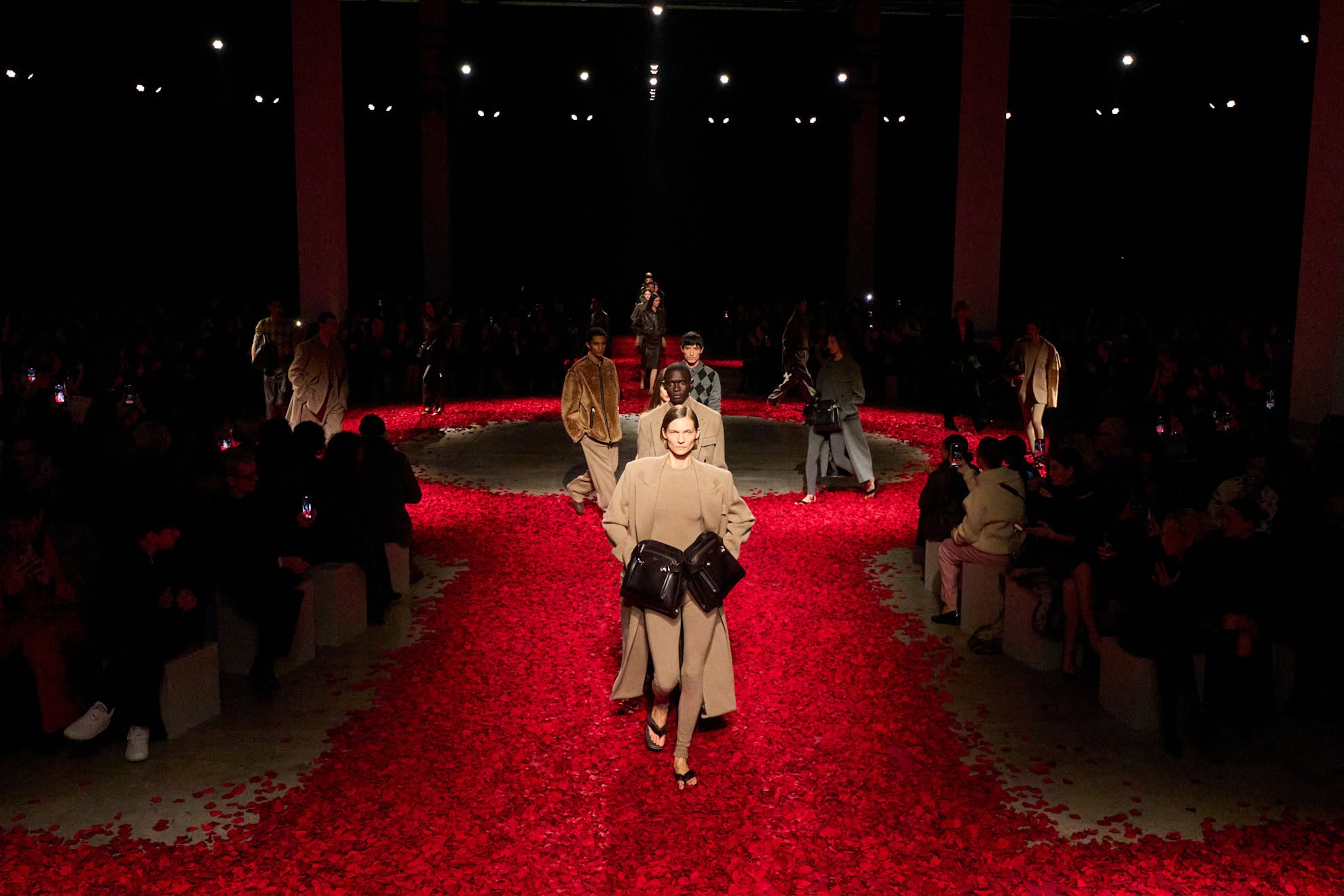With profitability down and consumer traffic lagging, Ferragamo bets on a back-to-basics reset: fewer SKUs, focused pricing, and sharper retail execution.
Key Takeaways
- Ferragamo’s Q2 revenues fell 11.8%, with H1 2025 revenues down 7.1% year-over-year, driven by steep declines in wholesale and Asia-Pacific markets.
- Wholesale revenues dropped 14%, while direct-to-consumer sales declined 5%, pressured by low tourist traffic in Europe and Japan.
- Asia-Pacific was the weakest region, down 18.6%, with Japan falling 12.6%—a key contributor to the company’s underperformance.
- A new turnaround strategy is underway, focusing on product refinement, pricing architecture, and marketing realignment.
- The product reset prioritizes timeless shoes and leather goods, fewer SKUs, and heritage-driven design with clearer market segmentation.
- Marketing spend is shifting away from influencers and shows, toward digital, in-store storytelling, and locally relevant brand activations.
- Ferragamo remains CEO-less, with the executive search still ongoing following Marco Gobbetti’s February departure.
- Executives expect strategic impact to begin late 2025, with more measurable results in 2026.
Ferragamo Charts Reset Strategy as Sales and Profitability Decline
Ferragamo is taking a hard look inward. Following a 9.4% drop in first-half revenues and a 38% decline in EBITDA, the Italian house has launched what it calls a comprehensive strategic overhaul—one aimed at tightening its core offering, restoring profitability, and reestablishing relevance in a rapidly evolving luxury landscape.
Executive board member Ernesto Greco laid out the brand’s roadmap during Thursday’s earnings call, framing the plan as the outcome of a months-long diagnostic review that spanned brand positioning, consumer behavior, and operational efficiency. “We’ve already started implementing tangible changes,” Greco said, “and we’re confident these efforts will gain traction by year-end—and more so in 2026.”
Fewer SKUs, Tighter Assortment, Refined Pricing
At the heart of Ferragamo’s plan is a return to its historical strengths: shoes and leather goods. Greco emphasized a shift toward timeless styles over trend-driven fashion, with plans to reduce SKUs by 30–35% to focus depth where demand is strongest. Product assortments will be streamlined but globally adaptable, while the brand fine-tunes its pricing architecture for greater consistency and market fit.
That pricing clarity comes at a moment of macroeconomic pressure. The brand raised U.S. prices by 3.5–4% in June to offset tariff and currency impacts. “Traffic is soft,” Greco acknowledged, “but conversion is improving, and interest in the product is growing.”
Operational Headwinds and Market Pressures
Ferragamo’s financial performance reflected the wider turbulence. Wholesale revenues dropped nearly 18% in H1 and over 34% in Q2 alone. Direct-to-consumer sales declined 6.5%, with gains in Europe and Latin America unable to offset steep drops in Asia-Pacific and Japan, where lower Chinese tourism and soft local demand weighed heavily.
The company’s operating loss reached €3 million, versus a €28 million profit last year, with net losses of €16 million. Capital expenditure was also scaled back—€16 million in H1, with full-year investments expected to focus more on digital, retail, and clienteling and less on influencers or fashion show spend.
Greco noted the brand has “lost some focus” on the travel retail channel, a historically strong pillar, and intends to reallocate resources toward reactivating it.
Digital Growth Amid Physical Decline
One bright spot was digital. E-commerce grew 12% in H1 as the brand invested in improved UX and conversion tools. Ferragamo sees this as a key lever for future growth, especially as it seeks to modernize its connection with consumers while optimizing its 357-store footprint. Select store closures are planned, particularly in underperforming Asian markets, while top-performing locations are being enhanced through subtle, cost-efficient visual merchandising upgrades.
Leadership Vacuum Remains
Greco confirmed the search for a new CEO is ongoing following Marco Gobbetti’s March departure, but emphasized that the current strategic plan was built collaboratively between internal leadership and outside consultants. While the wider luxury sector posted 5–10% growth between 2022 and 2025, Greco noted Ferragamo’s revenue fell nearly 19% over the same period—a delta that speaks to the urgency behind the group’s reset.
Looking Ahead
Ferragamo’s reset plan favors rigor over reinvention. With sharper product discipline, a more credible pricing structure, and a rebalanced investment strategy, the house is aiming to regain consumer trust and internal alignment. Whether these moves will be enough to reverse momentum remains to be seen—but the brand appears committed to a quieter, more deliberate rebuild, one SKU at a time.
